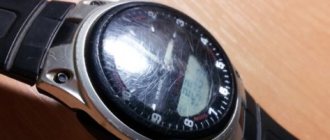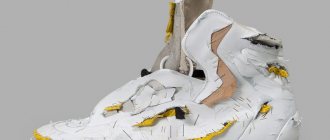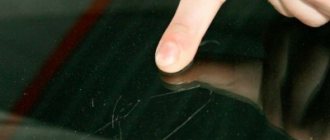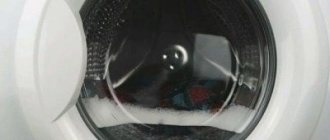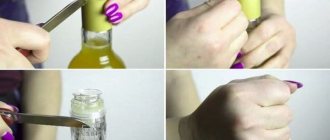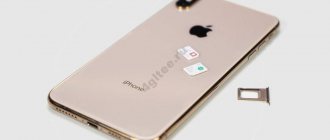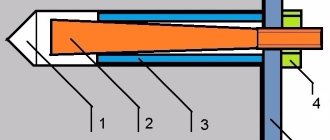More about the procedure
Domestic or industrial injuries often lead to penetration of various bodies into soft tissues (skin, subcutaneous tissue, muscles) - glass and wood fragments, needle fragments and metal particles, plant thorns, etc. Small objects, for example, a wooden splinter located in the superficial layers of the skin, can often be removed independently. However, in order to avoid even greater tissue injury and the development of inflammation and suppuration, such manipulations are best carried out in a medical institution. Removal of foreign objects from soft tissues at the GMS surgery center is performed quickly, painlessly and with minimal trauma.
Types of foreign bodies
In general, the term “splinter” refers to any foreign bodies in the skin, mucous membranes or soft tissues of the human body. The following can be a thorn:
- Various types of sawdust and wood chips,
- Small sharp pieces of metal
- Shards of glass,
- Thorns of roses, cacti and other plants,
- Other small sharp objects that can damage the integrity of the skin.
The main places of penetration of splinters in the human body are the upper and lower extremities. So, quite often a foreign sharp object ends up under the nails, in the fingers, soles, palms. Less frequently reported cases of splinters appearing in the buttocks, on the back, abdomen, sides, and neck.
You can get a splinter both during active physical activity , for example related to work, and while walking on the street and even at home, performing ordinary household activities.
Why foreign objects in soft tissue need to be removed
Such a seemingly harmless situation, such as a splinter or a small piece of glass that has penetrated into a leg or arm, can result in a serious inflammatory-purulent reaction, even leading to the development of phlegmon. Systemic infection and intoxication of the body also pose a significant danger. Therefore, in these situations, you need to immediately take adequate measures to remove the foreign object.
But if small splinters and splinters located in the superficial layers of the skin can be removed independently, naturally observing all the rules of asepsis, then you should not experiment on your own with foreign bodies that have penetrated more deeply. In addition, home removal often ends with only the extraction of a fragment of a foreign object, while other particles may go unnoticed. You can avoid such problems by promptly contacting a doctor, who will quickly and professionally remove the foreign body and all its fragments from the tissues.
Removing a fragment that is not visible
If severe symptoms are not observed, then you can remove a piece of glass that is not visible in the following way. Vishnevsky ointment or tar must be applied to the affected area. These products have the property of drawing out pus and foreign objects from the skin. As a rule, several procedures will be required if a small piece of glass in the leg is lodged in the deep layers of the skin. Under no circumstances should you put pressure on the sore spot, so as not to push the glass even deeper into the tissue. In addition, pressure can crumble a whole piece into small particles and complicate the situation. To make it easier to remove a splinter, it is recommended to carefully examine the area with a magnifying glass, and if possible, determine the angle at which it is easier to pull out the object. Before starting the procedure, you should disinfect your feet. If the ointments do not help and the symptoms begin to worsen, then you should contact the clinic to prevent complications.
Cost of services
The prices indicated in the price list may differ from the actual prices. Please check the current cost by calling +7 495 104 8605 (24 hours a day) or at the GMS Hospital clinic at the address: Moscow, st. Kalanchevskaya, 45.
| Name | Price |
| Removal of a foreign body from the ear, nose, throat | RUB 8,075 |
| Removal of a foreign body with tissue dissection | RUB 11,680 |
| Consultation with surgeon Alexander Givievich Natroshvili | RUB 4,999 |
Dear Clients! Each case is individual and the final cost of your treatment can only be found out after an in-person visit to a GMS Hospital doctor. Prices for the most popular services are indicated with a 30% discount, which is valid when paying in cash or by credit card. You can be served under a VHI policy, pay separately for each visit, sign an agreement for an annual medical program, or make a deposit and receive services at a discount. On weekends and holidays, the clinic reserves the right to charge additional payments according to the current price list. Services are provided on the basis of a concluded contract.
Plastic cards MasterCard, VISA, Maestro, MIR are accepted for payment. Contactless payment with Apple Pay, Google Pay and Android Pay cards is also available.
Western standards of treatment (evidence-based medicine)
Continuous staff development
Regular interaction with leading Russian and foreign medical institutions
Modern medical equipment and advanced diagnostic and treatment methods
Unified standard of service
We work around the clock 24/7/365
Make an appointment We will be happy to answer any questions Coordinator Oksana
Possible complications
Only in a small proportion of cases, a splinter that gets into the skin does not cause any negative consequences in the future, but simply grows together with the soft tissues and skin. The following complications are most often recorded:
- Suppuration. It is a consequence of the body’s natural immune response to a foreign body,
- Inflammation and swelling . It is formed as a result of secondary bacterial infections that have entered the wound. In the absence of necessary treatment, the risks of systemic problems, including sepsis, increase,
- Tetanus. In some cases, the penetration of a sufficiently large splinter may be associated with the risk of developing tetanus, caused by a specific gram-positive bacillus. A sufficiently high level of heat, lack of air and humidity provoke the development of pathogenic microflora, its transition to a vegetative form with the production of a specific toxin that threatens human health and life,
- Gangrene . It is a consequence of a long-term absence of any qualified assistance to a person with a foreign object in the body, who has developed complex suppuration, secondary bacterial infections appear in the chronic phase.
Benefits of visiting GMS Hospital
Removal of foreign objects from soft tissues at the GMS Hospital surgical center does not take much time and is performed on an outpatient basis, using local anesthesia and modern surgical equipment. By contacting us, each patient receives:
- fast, qualified surgical care without queues or delays;
- treatment of wounds and injuries of various types;
- non-hazardous and painless removal of a foreign object of any nature;
- in the presence of a serious traumatic injury, hospitalization is possible;
- the surgery center is equipped with the necessary equipment for rapid diagnosis and surgical treatment of foreign bodies in soft tissues;
- The operation is performed within an hour after treatment on an outpatient basis.
The center’s specialists have extensive experience in performing such interventions and quickly remove an object of any nature, using modern equipment and safe anesthesia. To make an appointment, please call the reception desk or leave a request on the website.
How to get rid of a splinter
You can quickly remove a splinter from a finger, heel or foot that has gone shallow, at home. There are several ways to remove a splinter with and without a needle. Let's look at each of these methods.
With a needle
The most famous and fairly effective way to remove a splinter is the use of tweezers, needles, and other tools. Usage diagram:
- Prepare in advance two needles, tweezers, nail clippers, as well as medical alcohol with cotton wool and chlorhexidine,
- Assess the depth of penetration of the splinter. If its edge sticks out and is of sufficient size, then you can try to immediately remove the foreign object with tweezers, having previously treated the area near the splinter. If there is no effect, you need to proceed to the following steps:
- Lift the top layer of skin with a needle to clearly see the end of the splinter or its main part,
- Use tongs or wire cutters to cut off the top of the skin.
- Use one or two needles to pick up the splinter and pull it out with tweezers.
The above measures must be carried out with parallel antiseptic treatment. Before the procedure, you should thoroughly wipe the area around the splinter and all the instruments with alcohol. After final removal of the foreign object, cotton wool with chlorhexidine is applied to the wound.
Using ointments
In some cases, special ointments help remove a splinter in a child or adult without a needle. The method is suitable for those people whose foreign body has not sunk very deeply. To carry out the procedure you will need ichthyol ointment. It is applied to the damaged area and then sealed with adhesive tape.
After one day, the patch is removed and a careful examination of the treated wound is performed; most often, the splinter protrudes to the surface and can be easily reached using ordinary tweezers.
As an alternative, Vishnevsky ointment or another oil-based product that penetrates the soft tissue and creates the prerequisites for the gradual release of the splinter from the wound is also suitable.
Traditional methods
Known folk methods for removing splinters:
- Scotch tape or adhesive tape. Stick the product with a strip on the place where the foreign object is located, then sharply pull it in the direction opposite to where the splinter entered,
- Soda. To prepare the product, you need to take regular baking soda (2 tablespoons), then slowly add a small amount of water to the substance so that a paste-like substance is formed. The latter is applied as a lotion to the damaged area for one hour, after which it is carefully removed along with the splinter. A similar method is applicable to all parts of the body, except the intimate area and face,
- Salt bath. Take 100 grams of table salt and dilute it in 500 ml of hot water. Pour the resulting liquid into a small bath, then place the limb with the splinter there for half an hour,
- Wax. It is better to use natural beeswax. Fresh products are applied to the site of foreign body penetration, held tightly pressed for 15 minutes, after which they are removed with a sharp movement,
- Glue. It is considered optimal to use PVA glue. The liquid is applied to the area where the splinter is embedded. You need to wait about 15 minutes for a thick crust to form. The latter is carefully peeled off from the skin along with the splinter.
Indications for surgery
You need professional help when inserting any object into soft tissue due to injury. Do not delay your visit to the surgeon if the following situations occur:
- inability to independently remove a foreign object;
- development of bleeding due to damage to the vessel by a foreign body;
- when palpating the location of a foreign object, severe pain is felt;
- infiltration, inflammation or suppuration has occurred in the area where the object was introduced;
- the wound does not heal, a purulent fistula has formed;
- loss of sensitivity is noted at the location of the foreign object.
There is no need to endure pain and delay treatment. All this can end in wound suppuration and general blood poisoning. To avoid complications and quickly forget about the incident, promptly contact a surgeon who will quickly and painlessly carry out all the necessary manipulations.
Folk remedies
If the foreign body cannot be picked up either with tweezers or with adhesive tape or adhesive tape, you can try to pull out the splinter:
- To remove microscopic, barely noticeable splinters, you can use a remedy widely known in cooking. Make a paste of baking soda and apply it to the splinters. The skin under the baking soda will swell over time and push particles to the surface. This method should be used after all the others, since with wet skin it is difficult to use adhesive tape, tweezers or a needle.
- You can apply the properties of indoor aloe. The juice of this plant perfectly softens the skin and has a bactericidal and wound-healing effect. The cut aloe leaf must be applied with the cut to the wound and secured with a bandage or plaster. After two hours, the foreign body can be easily removed with tweezers. If you use this method to remove a deep splinter from your foot, it will take more time. In this case, the procedure is repeated several times, and the bandage is changed every four hours.
- Birch tar is good at removing splinters. Apply a cotton swab soaked in it to the wound and hold it there for 30-40 minutes. The tip of the sliver should come out. Now the particle is easy to remove. You can use pine tree resin instead of tar. It has a bactericidal effect and will help avoid inflammation. This remedy is great for removing splinters from the heel.
- Everyone in the house has potatoes. You need to cut the tuber, apply it cut side to the affected area of the skin and tie it. Potato juice will help pull out the splinter.
- If you tie a piece of fresh lard to the damaged area, the native particle will come out quite quickly.
Preparation, diagnostics
To safely and accurately remove foreign objects from soft tissue, you need to determine its location as accurately as possible. For this purpose, the following techniques are used:
- radiography (in the presence of radiopaque bodies, for example, metal);
- transillumination – in the presence of glass, plastic objects, wood, etc.;
- Ultrasound of soft tissues.
If the intervention involves tissue incision, preoperative preparation includes a set of blood tests (biochemistry, general, sugar, coagulability, group and Rh factor, hospital infections). In situations where part of the foreign object is located above the surface of the skin and can be easily removed without resorting to incisions, no preparation is required.
How to advance the fragment to the surface of the skin?
How to remove a piece of glass if it gets in your leg? Naturally, you first need to make sure that the stuck glass comes as close to the surface of the skin as possible, then it will be easier and less painful to get it out.
You can do this in several ways:
- Apply pressure to the area. From the outside, grab your leg and squeeze as much as possible, pressing towards the location of the splinter. This way you will slowly move it towards the surface.
- Using Epsom salts and hot water. Fill a small bowl with hot water, add a cup of salt to it, and mix thoroughly. It is important that the salt dissolves completely. Then put your foot in the water for 30 minutes. Due to the effect of heat, the fragment will move closer, and the salt can simply push it out.
- Castor oil. Moisten a gauze or cotton swab with oil and apply to the wound. Leave the compress on your leg so that the oil is completely absorbed.
- PVA glue. Apply glue to the area where the splinter is located. Wait until it dries, then peel it off by hooking it at the edges. As a rule, the glass is glued to the glue and comes out with it. It may not come out completely, but it will move closer to the surface of the skin.
How is the operation performed?
In most cases, surgery is performed under local anesthesia and takes a few minutes. General anesthesia is used only for large operations. The doctor uses a scalpel to expand the wound canal to the required depth, grasp and remove the foreign object. After this, the wound cavity is treated with an antiseptic, sutures are applied, drained (if necessary) and everything is covered with a sterile bandage. In almost all cases, the patient is administered antitetanus serum and prescribed a short course of antibiotic therapy to avoid the development of complications.
You have questions? We will be happy to answer any questions Coordinator Tatyana
Can a splinter come out on its own?
In most cases, the splinter does not come out on its own without any additional action. The exception is situations when the foreign object is located shallowly, and a significant part of it protrudes above the skin.
Moreover, ignoring the problem leads to an even deeper immersion of the splinter into the soft tissue , which in turn creates the preconditions for secondary bacterial infections and other problems.
Regardless of the situation, it is advisable to try to remove the foreign body yourself, using folk remedies, tweezers, a needle, and other methods. If there is no result, be sure to contact your surgeon.
Features of the rehabilitation period
In order for healing to proceed quickly and without problems, after the intervention you must follow medical recommendations:
- regularly treat the surgical wound and change dressings;
- minimize the load on the injured area;
- exclude thermal procedures (hot bath, saunas, steam baths);
- Do not visit the pool or bodies of water.
To make an appointment with GMS Hospital specialists and remove a foreign object, please call or fill out the feedback form on the website.
If a splinter gets under the nail
A particular problem is a splinter that has stuck under the nail. Compresses will help pull it out:
- From medicinal herbs. Take dried comfrey or fenugreek root and grind it into powder. Add hot water until a thick paste forms. Treat your finger and nail with iodine or alcohol, apply the prepared paste and secure with a bandage. The bandage must be changed every three to four hours. Do this several times until the foreign particle appears on the surface. Carefully remove the splinter with tweezers.
- From a bow. The onion must be peeled and grated. The resulting paste should be applied to the injured nail, covered with plastic wrap and tied with a bandage. The compress needs to be changed every three hours.
- From pine resin. Apply it to the nail plate and around it, as well as under the nail. You need to bandage your finger tightly and leave the bandage on for six hours. After the specified time, the remaining oleoresin must be removed with a piece of cotton wool or gauze soaked in alcohol or turpentine. When you have access to the foreign particle, carefully pull it out with tweezers or a needle.
If the splinter under the nail is deep, a compress of crushed cabbage leaves with the addition of a tablespoon of alcohol or vodka helps. This compress is changed every three hours until the splinter becomes accessible.
After the foreign body has been removed from under the skin, the wound should be treated with a disinfectant and healing agent.
Quite unpleasant situations often happen in life when the need arises to provide first aid to oneself. Of course, not everyone has such skills, but this knowledge will not hurt anyone. For example, glass is the most common cause of cuts; its fragments are quite dangerous. Let's figure out how to get a small piece of glass out of your leg if the wound is minor or you just don't want to go to the doctor.
